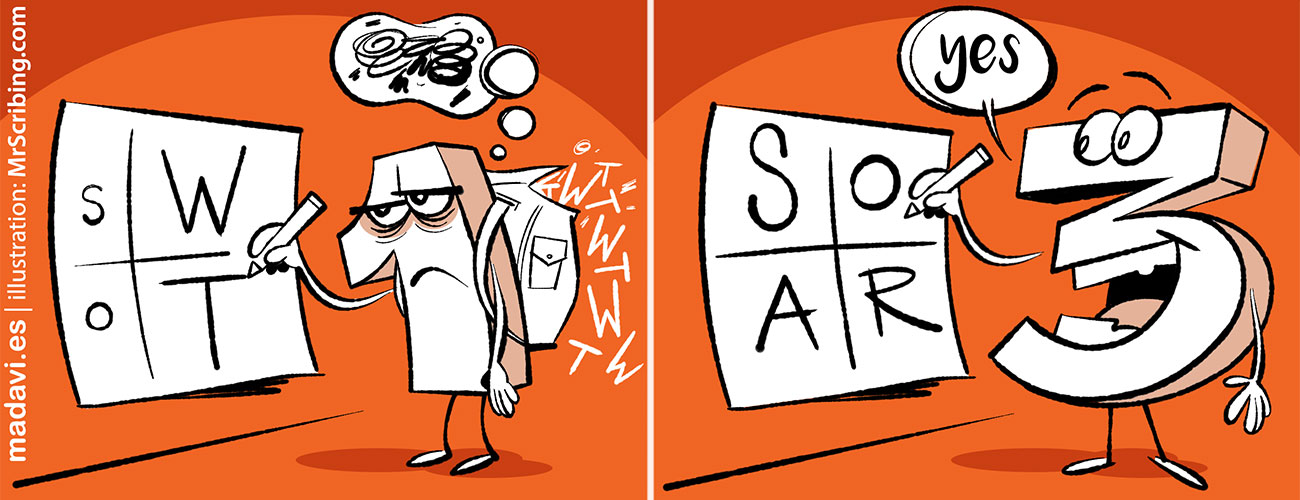Barbara Fredrickson y Marcial Losada han demostrado que para estar en plena forma mental, el ratio entre estados mentales positivos y negativos debe de ser al menos 3 a 1.
Mantener este ratio afecta enormemente a nuestra energía, resiliencia, capacidad creativa y acción.
En cambio, gran parte de las técnicas de management actuales se centran mucho más en lo negativo que en lo positivo.
¿Investigamos más el éxito o el fracaso?
Cuando hay un fracaso la tendencia es clara, insistimos en entender qué ha pasado para resolver el problema y que no se vuelva a dar. El análisis de los problemas es muy natural.
¿Y el análisis del éxito? Normalmente y en el mejor de los casos tendemos a felicitar a aquellos que han tenido éxito y ahí se acaba la conversación. Nuestra propuesta es analizar el éxito, preguntando además de felicitar: ¿Qué habéis hecho para tener tanto éxito?
Es razonable pensar que una empresa que está en el mercado tiene muchos más éxitos que fracasos. La idea es al menos analizar 3 casos de éxito por uno de fracaso.
Un ejemplo palmario es el famoso DAFO. Fortalezas y Oportunidades son visiones positivas, por el contrario, Debilidades y Amenazas es negativo, al menos tienden a crearnos negatividad y en muchos casos acompañado de proyección de culpas.
Un cliente me dijo un día: “si surge un problema y alguien sonríe es que ya sabe quién es el culpable”. Como si saberlo solucionase algo.
Además, ¿cuánto tiempo estamos en fortalezas y oportunidades y cuánto en el binomio debilidades y amenazas? En mi propia y humilde investigación, los equipos encuestados están al menos el doble de tiempo en la parte negativa que en la positiva, creando un ratio 1-2, muy lejos de 3-1 que propone la investigación de Barbara y Marcial.
La alternativa es hacer un SOAR, Strenghts, Opportunities, Aspirations and Results. Metodología de Jacqueline Stavros. Al final, se trata de definir el resultado y para conseguirlo alinear -lo que Sí tenemos- las fortalezas, hacia -lo que Sí queremos-, las aspiraciones, en el sentido de las oportunidades que nos brinda el entorno.
Hay que tener en cuenta que la alineación de fortalezas no solo genera performance sino que también genera transformación de aprendizaje y con ello la adquisición de nuevas fortalezas.
Si has hecho muchas veces el DAFO merece la pena probar, al menos una vez con SOAR. Te gustará y la energía para la acción será mucho mayor.
En la web http://positivityratio.com/single.php encontrarás un test para descubrir tu propio ratio de positividad.
En este vídeo encontrarás la explicación de Barbara Fredrickson:

